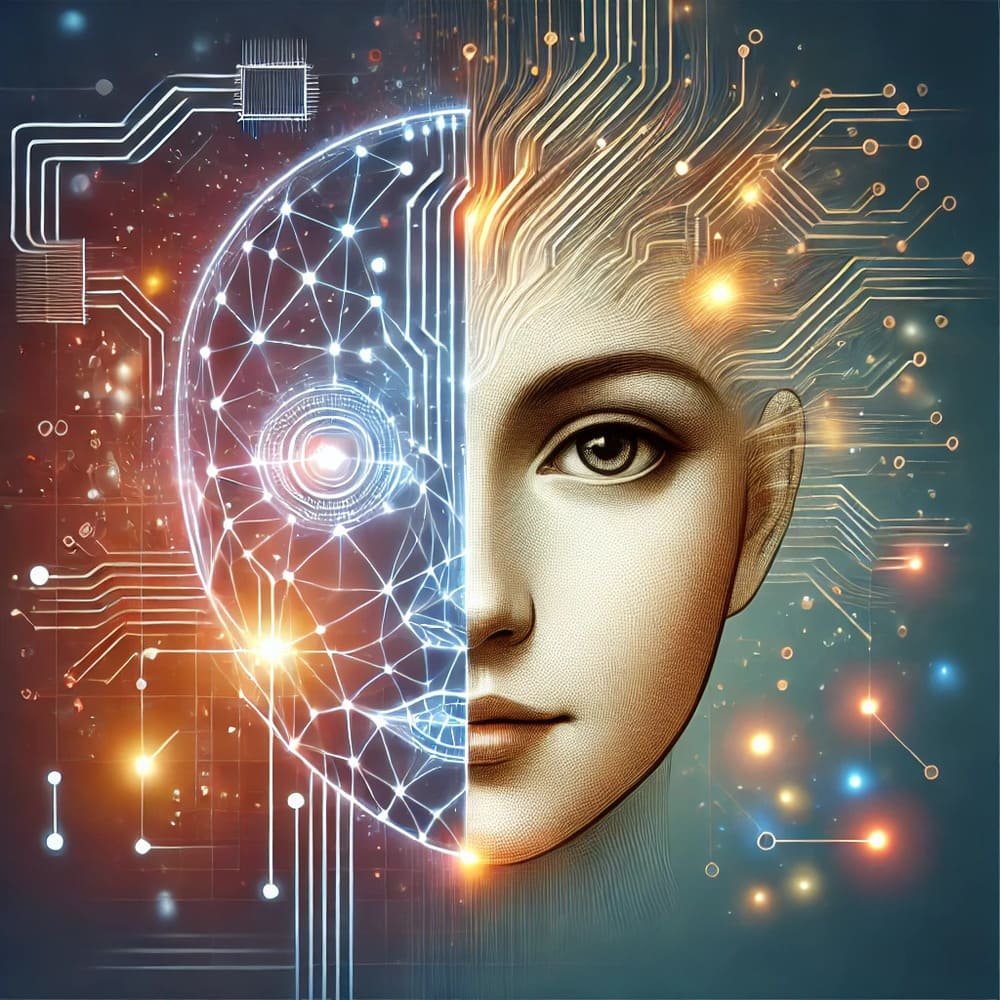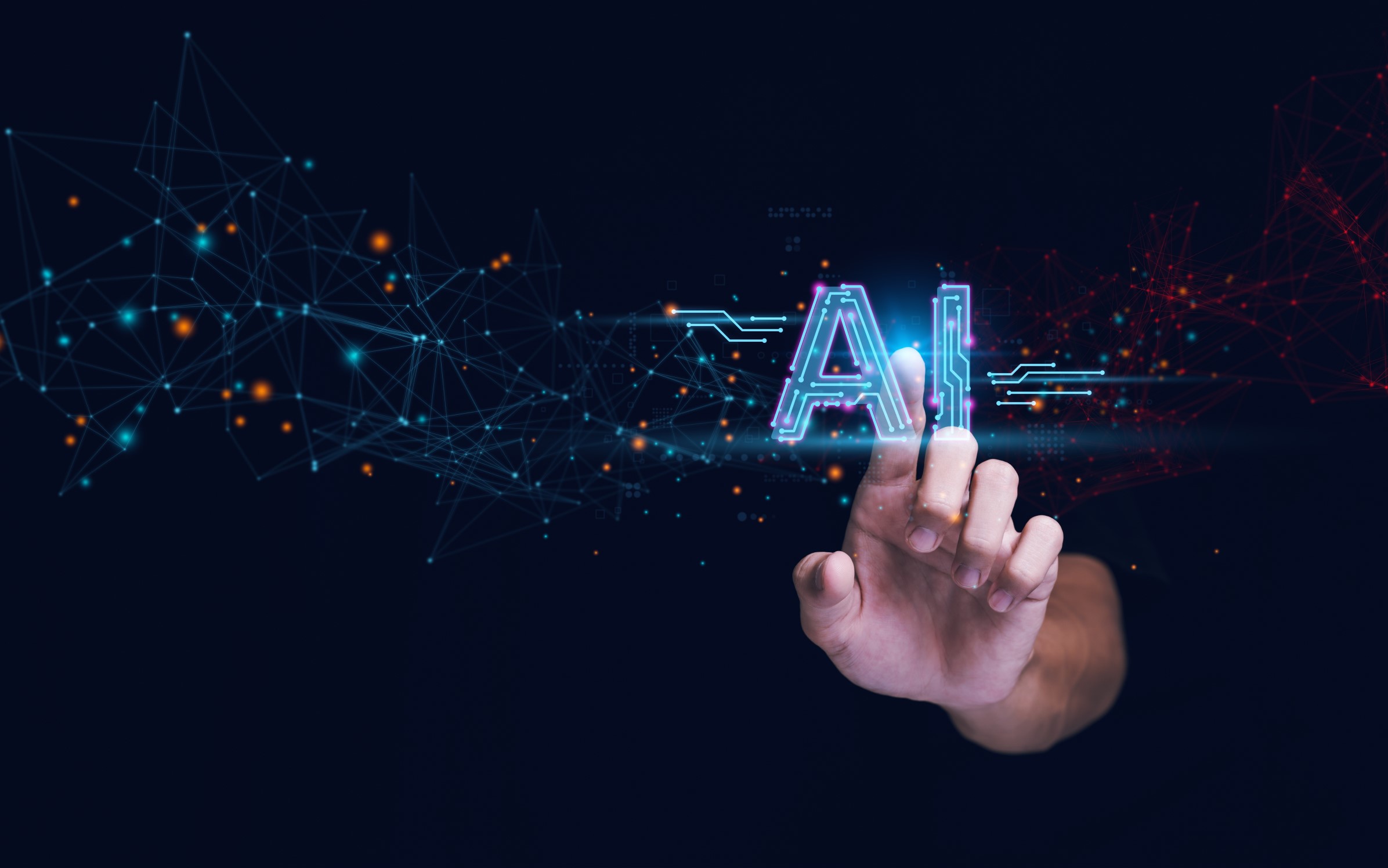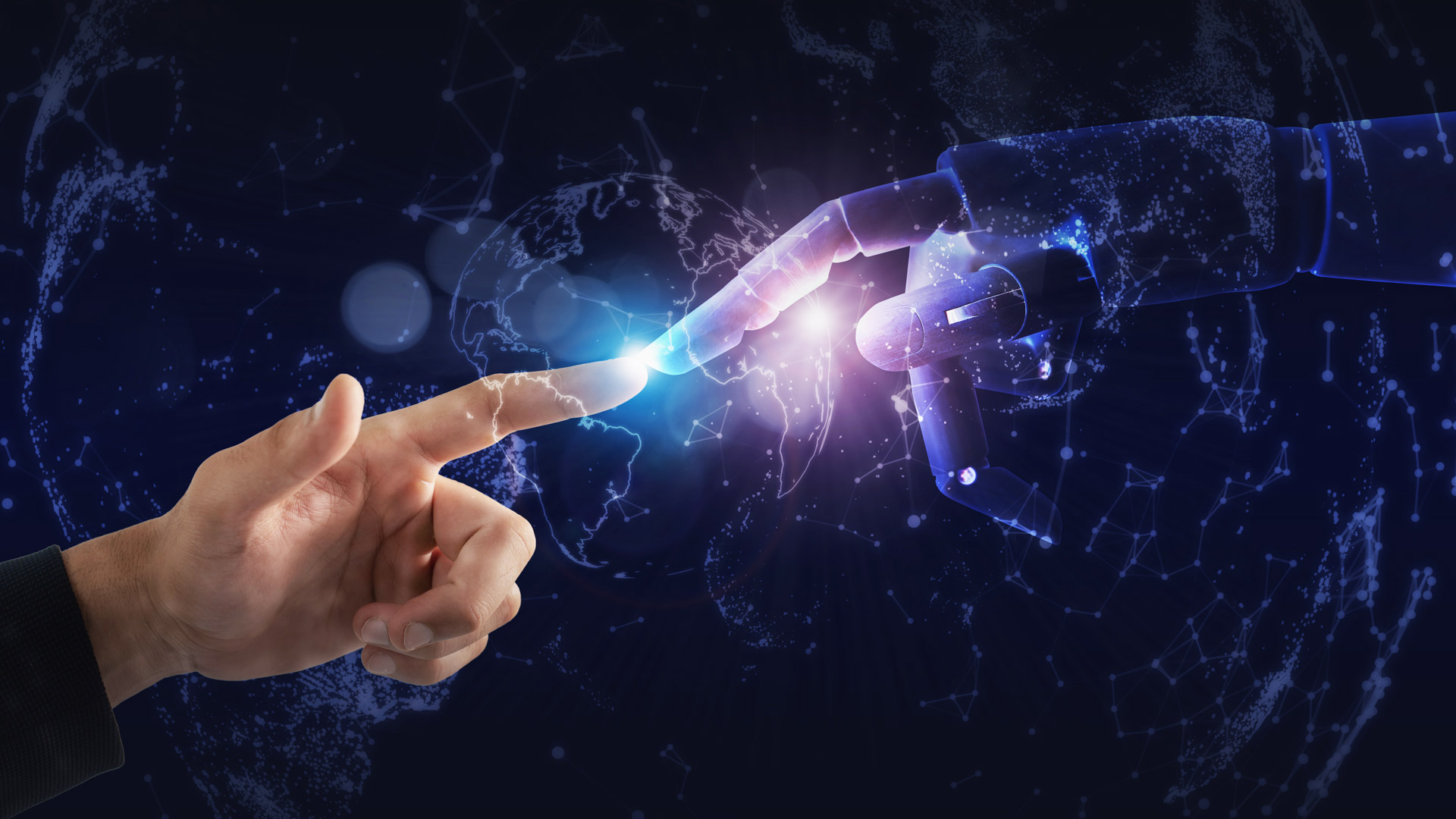
Subscribe to our free Newsletter
💌 Stay ahead with AI and receive:
✅ Access our Free Community and join 400K+ professionals learning AI
✅ 35% Discount for ChatNode
Welcome to The AI Report!
.png)

How to use an AI humanizer
AI humanizers transform robotic AI-generated text into natural, relatable, and human-like content by adjusting tone, style, and emotional nuance. They enhance communication, personalize interactions, and improve readability, making AI outputs more engaging and authentic.


Key Takeaways:
- Understanding AI Humanizers: Explore how AI humanizers bridge the gap between machine and human interaction, enhancing user experience.
- Key Features: Discover the functionalities that allow AI humanizers to mimic human-like responses, making conversations more engaging and relatable.
- Integration Techniques: Learn how to seamlessly integrate AI humanizers into existing systems for optimized performance and user satisfaction.
- Applications Across Industries: Delve into various industry applications where AI humanizers can revolutionize customer service and support.
- Future Implications: Consider the ethical and technological implications as AI humanizers continue to evolve and influence human-AI interactions.
Contents
- Introduction
- What is an AI Humanizer?
- Importance of AI Humanizers
- Understanding AI Humanizers
- Core Features
- How AI Humanizers Work
- Steps to Use an AI Humanizer
- Setting Up
- Inputting Data
- Adjusting Parameters
- Reviewing Outputs
- Best Practices
- Choosing the Right AI Humanizer
- Common Pitfalls to Avoid
- Applications of AI Humanizers
- In Customer Service
- In Content Creation
- Conclusion
- Summary of Benefits
- Future of AI Humanizers
Introduction
In a world where artificial intelligence is rapidly evolving, the concept of AI humanizers is emerging as a fascinating tool. But what exactly does it do?
What is an AI Humanizer?

This innovative technology bridges the gap between machine efficiency and human touch. By enhancing AI interactions to feel more natural and empathetic, it transforms how we engage with digital systems.
The Importance of AI Humanizers
In the rapidly evolving world of technology, the role of AI humanizers has become crucial. These tools bridge the gap between machine-generated content and genuine human interactions, making digital communications more relatable and engaging.
AI humanizers enhance user experiences by adding a touch of personality. Whether it's customer service bots or content creation, the ability to make interactions feel personal is invaluable. This not only improves user satisfaction but it also fosters trust in technology.
- Enhanced Communication: AI humanizers allow for more natural and fluid conversations, making it easier for users to connect with machines.
- Personalization: By understanding context and emotions, these tools tailor interactions to meet individual needs.
- Efficiency: They streamline processes by reducing the need for human intervention, allowing for faster and more accurate responses.
Understanding AI Humanizers
Core Features
AI humanizers are transforming the way we interact with technology. These tools are designed to make AI-generated content sound more natural and relatable, bridging the gap between machine output and human communication. By integrating human-like nuances, they enhance user engagement and comprehension.
- Natural Language Processing: This feature allows the AI to comprehend and generate text that mimics human speech patterns, making interactions smoother.
- Emotional Intelligence: By analyzing the emotional tone of the content, AI humanizers can adjust responses to resonate better with the audience, creating a more personalized experience.
- Context Awareness: Understanding the context of a conversation or content ensures that AI responses are relevant and coherent.
How AI Humanizers Work
AI humanizer tools analyze data, transforming it into engaging content that resonates with audiences. By understanding context and nuances, they craft messages that feel more personal.
- Contextual Analysis: AI humanizers examine the surrounding data to tailor responses appropriately.
- Emotion Detection: They assess emotional cues to adjust tone and style.
- Language Adaptation: These tools modify language to suit different audiences, ensuring clarity and relatability.
How to Use an AI Humanizer

The first step to using an AI humanizer is to set up the software. Ensure your system meets the necessary requirements and download the application. Once installed, open the application and create an account. This will often involve providing some basic information to tailor the experience to your needs. After logging in, take a moment to familiarize yourself with the user interface, noting key features and tools available at your disposal. Doing so will enhance your efficiency as you begin to humanize AI interactions, making them more relatable and effective in real-world scenarios.
Inputting Data
The next step is to feed it the right data. This process is crucial as it directly influences the quality of the output.
Here’s how you can effectively input data:
- Understand Your Audience: Tailor your data input to match the style and tone your audience expects. Knowing who you are addressing helps in selecting the right kind of data.
- Quality Over Quantity: It’s not about how much data you input, but how relevant it is. Ensure your data is accurate and up-to-date.
- Use Diverse Sources: Incorporating data from various sources can provide a more balanced perspective, enhancing the human-like quality of the output.
By focusing on these aspects, you can maximize the potential of an AI humanizer.
Adjusting Parameters
Enhancing the AI's ability to mimic human nuances is the next step, and typically involves tweaking various parameters.
Here’s how you can optimize your AI humanizer experience:
- Tone Control: Adjust the tone settings to match the desired level of formality or casualness. This helps in tailoring the output to suit different audiences.
- Emotion Levels: Modulate the emotional depth to make interactions feel more authentic. Whether aiming for a cheerful tone or a more subdued one, this feature is key.
- Pacing and Rhythm: Use pacing adjustments to ensure that the AI’s delivery matches the natural rhythm of human conversation.
- Context Awareness: Activate this setting to allow the AI to better understand and respond to situational cues, enhancing its contextual relevance.
Reviewing Outputs
Next, you need to evaluate the AI-humanized generated content. Analyzing and optimizing the content created using your AI humanizer is a crucial step to ensure it meets your expectations and resonates with your audience.
Here are some tips to consider:
- Readability: Ensure the text flows naturally and is easy to read. It should mimic human writing styles.
- Relevance: Verify that the content aligns with the intended topic and purpose.
- Consistency: Check that the tone and style are consistent throughout the text.
- Engagement: Look for elements that capture attention and encourage interaction. Consider questions or calls to action.
- Accuracy: Fact-check any data or statements to maintain credibility.
Choosing the Right AI Humanizer

Selecting the right AI humanizer can enhance the natural feel of your content.
Common Pitfalls to Avoid when choosing your AI humanizer:
- Over-reliance on Automation: While AI can streamline tasks, don't depend on it entirely. Balance automation with personal touches to maintain authenticity.
- Ignoring Context: AI tools need context to function optimally. Ensure you provide clear guidelines and relevant data for accurate outcomes.
- Neglecting Updates: Regularly update your AI humanizer to incorporate the latest advancements and improvements. This keeps your content fresh and relevant.
- Overlooking Bias: Be aware of potential biases in AI algorithms. Regularly audit outputs to ensure fairness and inclusivity.
- Skipping Testing: Test AI-generated content before publishing. This helps catch errors and ensures the message aligns with your brand voice.
By being mindful of these pitfalls, you can maximize the benefits of your AI humanizer and enhance your content strategy.
When to Use an AI Humanizer

AI Humanizers in Customer Service
AI humanizers are revolutionizing customer interactions by making them more personal and engaging. They empower businesses to provide support that feels natural and empathetic, addressing customer needs with precision and care.
These tools enhance communication by mimicking human-like responses, creating a more relatable experience. This not only improves customer satisfaction but also builds loyalty.
AI Humanizers in Content Creation
Using an AI humanizer when creating content can significantly enhance the natural feel of the writing. These tools help transform robotic outputs into engaging narratives that resonate with readers.
- Enhancing Tone and Style: An AI humanizer adjusts the tone to match your target audience, whether it's conversational or formal.
- Maintaining Consistency: It ensures a consistent voice across your content, vital for brand identity.
- Improving Readability: By simplifying complex phrases, it makes content more accessible.
Future of AI Humanizers

AI humanizers are paving the way for more meaningful digital experiences, including:
- Enhancing Communication: AI humanizers can refine automated responses, making them feel more personal and empathetic.
- Improving User Experience: By understanding user emotions, these tools can tailor interactions that resonate on a personal level.
- Facilitating Learning: In educational settings, AI humanizers adapt content to fit the emotional and cognitive needs of each learner.
- Empowering Creativity: Artists and writers can leverage AI to enhance their creative processes, generating ideas that are both innovative and human-centric.
As technology continues to evolve, AI humanizers will play a crucial role in ensuring that our digital interactions remain warm and engaging.
FAQs
What is an AI Humanizer?
An AI Humanizer is a tool that adjusts AI-generated text to make it sound more natural and human-like. It modifies tone, style, and complexity to better fit human communication.
How does an AI Humanizer work?
AI Humanizers use advanced algorithms and machine learning models to analyze text and apply changes that improve its readability and relatability.
Why should I use an AI Humanizer?
Using an AI Humanizer can enhance user engagement and comprehension by making content more relatable and easier to understand, especially in customer service and marketing communications.
Can AI Humanizers be integrated into existing workflows?
Yes, many AI Humanizers offer APIs and plugins that allow seamless integration into existing content creation and management systems.
Are there any limitations to using an AI Humanizer?
While AI Humanizers are powerful, they may not perfectly capture specific cultural nuances or highly specialized jargon. It's important to review and adjust content manually if needed.
Conclusion
In conclusion, using an AI humanizer can significantly enhance the way we interact with artificial intelligence. As discussed earlier, understanding the core functionalities of AI humanizers is crucial for effective utilization. By focusing on its capabilities to make AI outputs more relatable and empathetic, users can bridge the gap between machine and human interaction.
Furthermore, as we explored the implementation strategies, it's clear that integrating these tools into existing systems can lead to more engaging and user-friendly experiences. Remember, the key is to tailor the AI humanizer to fit specific needs and objectives, ensuring that the AI remains a tool that complements human efforts rather than replacing them.
To sum up, the journey from understanding to application involves continuous learning and adaptation. By leveraging the strengths of AI humanizers, we can create a more harmonious interaction between humans and technology, ultimately leading to better communication and understanding.


.png)
.png)
.png)
.png)
.png)
.png)
.png)
.png)
.png)
.png)
.png)
.png)
.png)
.png)
.png)
.png)
.png)






.png)





